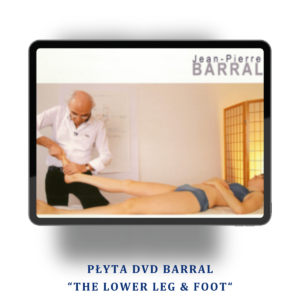More than 40 years ago Jean-Pierre Barral and Paul Mercier started a new modality of manual therapy, called VISCERAL MANIPULATION. They were able to give new dimensions to an approach which already had its roots in the work of the pioneers of osteopathy, in the practices of early bonesetters and in methods that healers of various cultures had developed over a long period of time. Barral has published several VISCERAL, NEURAL and VASCULAR MANIPULATION books and now expands on these concepts and original techniques. This DVD introduces new ways of how to work with organs so that these interventions also effect the neuroendocrine regulation of the digestive system.
Barral introduces each technique with genuine anatomical drawings. The anatomical introductions and conceptual explanations are followed by a practical demonstration of each treatment.
An innovative approach is presented in theory and practice. The three DVDs describe the neuroendocrine effects of Visceral Manipulation in relation to the following organs and related anatomical structures:
- the peritoneum and the greater omentum ,
- the diaphragm,
- the stomach, duodenum, liver, gallbladder and pancreas,
- the small intestine and colon,
- the osteopathic approach to high blood pressure via manual treatment of the vagus nerve.
In this DVD Jean-Pierre Barral demonstrates his new techniques for the treatment of the knee. The underlying concept has been developed over many years in collaboration with Alain Croibier. Its practical application to the knee is exemplary.
Barral calls the knee a „neurological joint.” He alludes here to the complex relationships that exist between the knee and the nervous system. The example of the knee demonstrates very clearly how the different building blocks of the organism are neurologically wired to the „executive floor“ – the brain.
The application field reaches from prevention of sports injuries to the treatment of chronic and acute dysfunctions. Barral succeeds in giving a practical, anatomy-based introduction into the various facets of this particularly problematic joint.
The first chapter looks at its active and passive stabilizers. The practical treatment demonstrations circle around the interaction between muscles and ligaments.
The second chapter is also dedicated to active and passive stabilizers. From the combination of techniques demonstrated in the first and second chapters emerges a three dimensional way of entrance to the knee joint.
The third chapter regards specifically the ligaments that play a role for the menisci.
In the three parts of the fourth chapter Barral demonstrates the treatment of the neurovascular system. Innovative techniques are shown here to treat the nerves, arteries and veins which are the backdrop of important knee dysfunctions.




